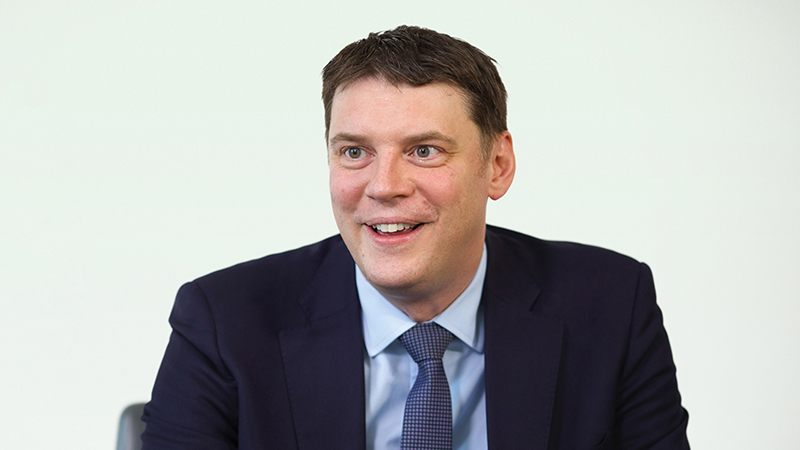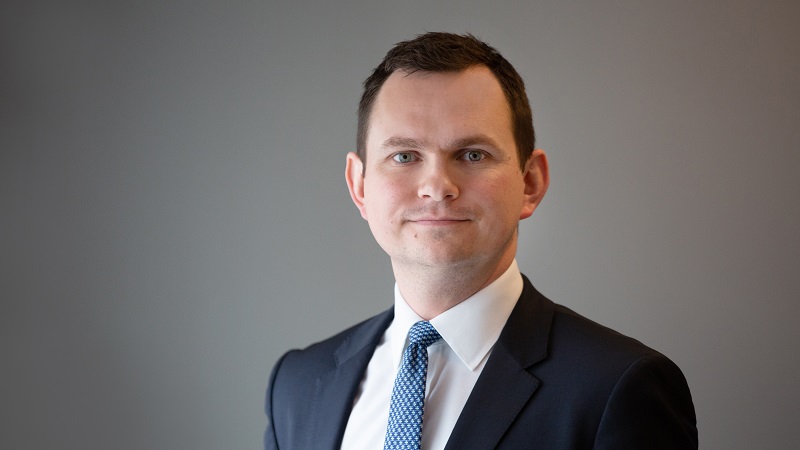For the past decade and more, the UK investment team at Momentum Global Investment Management (MGIM) has viewed convertible bonds as “a fantastic asset class” that is largely under-appreciated by multi-asset investors.
“It fits really well into a multi-asset portfolio, bridging the gap between equity and fixed income, and giving you that defensive equity market upside exposure,” explains MGIM’s director of investment Andrew Hardy (pictured).
In May 2020, the team rotated out of defensive equities and into convertibles, more or less doubling its allocation. As a result, most of MGIM’s portfolios had low double-digit exposure and Hardy says it really punched above its weight in terms of contribution to performance.
Indeed, most of the portfolio holdings in that area were up by about 25% last year, which meant it significantly outperformed equity markets while providing better downside protection.
“The types of balanced strategies we buy in that area you would normally expect to give you maybe half or two-thirds of the equity market upside in a good year. So to outperform to that extent with low risk is very surprising.”
One of the tailwinds for convertibles last year was that the bulk of stocks issued were typically from growth-biased businesses such as tech firms. In January this year, however, the team pared back exposure, halving it from 10% to 5%, largely because valuations were no longer as attractive.
“Convertibles were particularly attractive in the middle of last year. The ability to participate in both upside and, to a limited extent, downside markets is valuable – and when that’s cheap, it’s really worth taking advantage of. We don’t think it’s quite as cheap anymore so it’s rather less compelling.”
The proceeds were split between the Sequoia Economic Infrastructure Income Trust and the iShares Emerging Market Debt Index Fund. On Sequoia, Hardy says: “It is reasonably valued and still paying off a high single-digit yield, which in these times is very attractive. It is well diversified and has a strong tailwind from greater infrastructure spending over the next few years.”
The team’s outlook for 2021 is that reopening economies and the associated rebound in growth and corporate earnings, coupled with the unleashing of pent-up spending, should be supportive for markets that have been left behind but have started to perform. These include infrastructure and property, as well as deep cyclicals like energy and financials.
Global ex-US more exposed to cyclical rebound
The team has shifted underweight the US in favour of an overweight to global ex US and emerging markets. Speaking about the latter, Hardy says: “We see these markets as more exposed to that cyclical rebound and valuations are that much lower.”
That said, while there is a lot of talk about the US being expensive and concentrated at the top end, Hardy thinks it is wrong to tar everything as overvalued. “The majority of the market is reasonably attractive,” he says. “There are plenty of opportunities to build an attractive and diverse portfolio within the US market.”
He adds: “As long as you take an active, fundamental bottom-up approach to your allocation to the US, or indeed to global, I don’t think you need to be as underweight the US as you might if you were allocating by indices or passive vehicles. If you were to just look through a value style investing lens, the US isn’t bad at all – it’s a very large, deep market.”
Hardy singles out Conventum Lyrical on the deep value side, which has a strong mid-cap bias. He also flags the Paradice Global Small Mid Cap Fund, which forms part of a global equity portfolio MGIM runs as a segregated mandate.
Now the team has a bias towards small and mid-cap exposure, which got hit hard last year but tends to outperform in cyclical upswings. “I think there’s still more mispricing, and also you’re starting to see much more buyout activity, which is a key driver of the outsized returns you can get from the small and mid-cap market.”
Lighter on traditional credit, heavy on Tips
In terms of fixed income, MGIM is lighter on traditional credit than historically. During the sell-off last year, it capitalised on the opportunity to buy investment-grade and high yield at “fantastic” yields. But yield premia has since tightened and Hardy prefers to use the risk budget elsewhere.
Portfolios have a combination of sovereign and corporate debt with corporate tilted towards short-duration. Within more defensive fixed income, and especially in low-risk portfolios, there is a bias to inflation-linked bonds, particularly US treasury inflation protected securities (Tips).
“It’s your ultimate defensive asset,” says Hardy. “Yields have picked up in recent weeks but overall, headline yields are still low. The outlook for monetary policy is loose, with little to no prospect of rate hikes throughout the rest of this year.
“We heard from the Fed very clearly towards the end of last year that they are willing to look through short-term blips in inflation upwards, so I think there will be a loose monetary policy outlook.
“That’s supportive for risk assets overall but it also should cap the downside in government bonds at this point.”
Hardy says portfolios benefited from Tips exposure in the past nine months or so, noting US inflation expectations fell to incredibly low levels but have since recovered and look fair value, with 10-year breakeven expectations slightly above 2%.
“Over the medium term, the risks to inflation look more to the upside than they do to the downside.”
Tips are preferred to UK gilts because the breakeven yields are more attractive. “In the UK, real yields are affected by huge demand from investors like pension funds, which makes it a very expensive asset class,” says Hardy. “Also, the US has a strong economic outlook and it should be able to recover extremely well.”
Emerging performance
The team is also positive on emerging markets and is overweight in portfolios on the basis that valuations in the region are attractive. Some of the exposure is through EM debt and some convertible bond strategies that focus on Asia.
“Overall, from an asset allocation point of view, we think this should be a good year for emerging markets.”
Hardy notes recent outperformance has been heavily driven by China but that should broaden out if economic data develops as expected.
“If we have a significant rebound in the opening of economies, GDP, earnings and demand, as well as ongoing growth in trade and employment, that should play into emerging markets’ hands, but particularly the parts of EM that have underperformed during the course of the past year.”
Hardy highlights Prusik Asian Income as a strategy the team rates in this area.
Global property is also looking attractive. Hardy thinks investors are gaining in confidence as recapitalisation occurs and there is greater visibility on rental income and dividends. But he’s quick to point out all exposure is through listed vehicles; the team never has and never will use open-ended funds for property.
“You need to be selective about what you want, but with the right analysis and research there are some great opportunities out there for mid-to-high single-digit yields, or higher in some case.”
Hardy highlights the Ediston Property Investment Company, which has a strong bias to retail warehouses and out-of-town shopping complexes.
“They were hit hard during the pandemic and went to a large discount to NAV,” he says. “We stuck with it and have seen a huge recovery since.”










